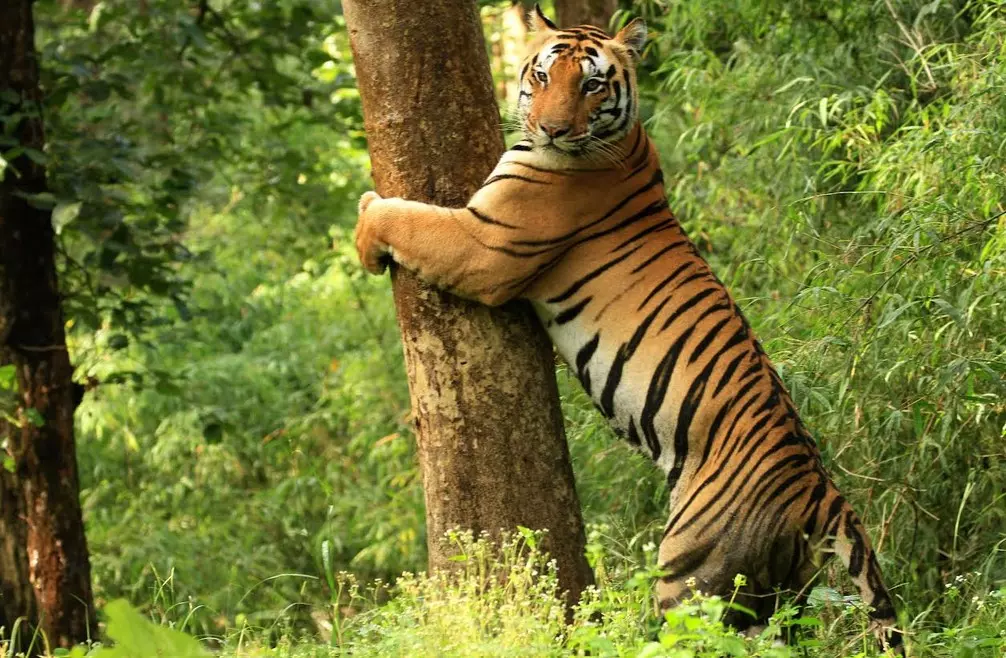Three Tigers Migrate From MP to Chhattisgarh Reserves

Bhopal: A tiger from Kanha National Park (KNP) in Madhya Pradesh has moved to Achanakmar wildlife sanctuary in Chhattisgarh by covering around 450 km.
The big cat, spotted for the first time in the Achanakmar Tiger Reserve (ATR) recently, has been identified as T-200 of Kanha National Park (KNP) by the Wildlife Institute of India (WII), field director, ATR, Manoj Pandey told this newspaper on Sunday.
The adult male tiger was first spotted in the Lamni forest range, part of the core area of ATR, a month ago and currently seen moving in the Manendragarh forest division in north Chhattisgarh, Mr Pandey said.
The ATR got in touch with the WII to identify the tiger after the big cat was spotted in the reserve.
It has been found from the WII data that it is T-200 from the Kanha Tiger Reserve (KTR), he added.
“The tiger seems to have localized”, the forest officer said.
The feline may have covered around 450 km in Kanha- Achanakmar corridor to move to the ATR, a forest officer of Kanha reserve said.
Another male tiger, believed to be three-four years old, was also spotted for the first time in the buffer zone of Kabir Chabutra of ATR on November 30 this year, according to Mr Pandey.
The big cat has moved from Dindori in Madhya Pradesh and may be from Bandhavgarh Tiger Reserve (BTR), Mr Pandey said.
Sources said that the photograph of the tiger has been sent to the WII for its identification to find out from where it has moved to ATR.
In December, 2023, a female tiger had moved from Pench Tiger Reserve (PTR) in Madhya Pradesh to the ATR by covering around 400 km.
The six-year-old tigress was first sighted in Lormi forest range in the ATR in December 2023.
The WII data later confirmed that the tigress had moved from PTR to ATR.
The movement of three tigers from Madhya Pradesh to Chhattisgarh clearly indicates that at least a couple of corridors between the two states are still active and safe and conservation of the corridors are needed, Mr Pandey said.
Wildlife experts believe that the high density of tiger population in a reserve may lead to movement of the big cats to the other landscapes.
A forest officer of MP has however discounted this.
“Tiger movement from one landscape to another is a natural phenomenon. It is good for conservation since it enriches the genetic pool of the big cats”, Additional Principal Chief Conservator of Forest (APCCF) (wildlife) L Krishnamoorthy told this newspaper.

